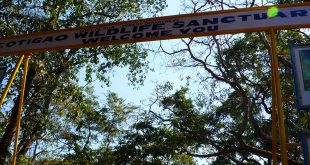SH38 is the only road that leads through the park. The road is unsealed over 74 km.
On 28 July 1954, the catchment areas of Lake Waikaremoana, Lake Waikareiti and other Crown reserves were gazetted as a national park, and by 1957 proposals were well underway to add the rest of the Crown land in Te Urewera north of Ruatahuna. This proposal was formalised in November 1957 when an additional 1,350 km² were added. Further additions were made in 1962, 1975 and 1979, with smaller acquisitions and boundary alterations in the intervening period. The lake bed and Māori enclaves were not included in the park gazetting. The Crown had leased the lake bed, which was managed by the Department of Conservation.
Te Urewera is the traditional home of the Tuhoe people. Due to its geographical isolation, it was one of the last regions to be claimed by the British during colonisation in the 19th century. In March 2013, Tuhoe signed a deed of settlement, settling the tribe’s claims at the Waitangi Tribunal. Under the deal, Tuhoe will get $170 million and more control over Te Urewera. Te Urewera ceased to be a national park under the Te Urewera Act 2014, but the new entity still meets the International Union for Conservation of Nature criteria for Category II – National Park. The area is now administered by the Te Urewera Board which comprises joint Tūhoe and Crown membership. It is still open to the public and the Department of Conservation will continue to work in Te Urewera and maintain the tracks and facilities in conjunction with the Board.
User reviewed online profile of Te Urewera National Park: East Coast (Gisborne) region, New Zealand. Plan your adventure holiday to Te Urewera National Park armed with information and reviews provided by experts and by users. Find out about when to go, how to get there, what to do, best season to visit, its wildlife, habitat and much more…
What to do in Te Urewera National Park:
Wild Life: Tui, Bellbird, Morepork, North Island Kokako, Blue Duck, North Island Fernbird, Yellow-crowned Parakeet, New Zealand Scaup, North Island Brown Kiwi, New Zealand Falcon, North Island Robin, North Island Kaka, North Island Rifleman, Long-tailed Bat, Short-tailed Bat, Gecko, Skink, Koaro, Short-jawed Kokopu, Banded Kokopu, Blue-gilled Bully, Red-finned Bully, Long-finned Eel, Short-finned Eel, Common Bully, Common Smelt, Cran’s Bully, Torrentfish, Dwarf Galaxia
Adventure: Boating, Fly Fishing, Hunting, Tramping, Hunting and Short & Long Walks
Where is Te Urewera National Park:
Region: The Park straddles the Huiau and Ikawhenua Ranges, in the east of the North Island between Bay of Plenty and Hawke’s Bay.
Location: Gisborne district, East Coast (Gisborne) region, New Zealand
When & how to get to Te Urewera National Park:
Best Time to Visit: 01-Nov to 31-Mar
Getting There: The nearest towns are Whakatane and Taneatua to the north, Murupara and Ruatahuna to the west, and Wairoa to the east. Near the shores of Lake Waikaremoana is the small settlement of Aniwaniwa where a visitor centre is located. Waikaremoana can be approached from two directions. State Highway 38 links Wairoa and the East Coast with the central North Island, and passes the lake and the Aniwaniwa Visitor Centre. The highway has a 2WD gravel surface for about 90km between Murupara and Aniwaniwa (about a 2 hour drive). There are well marked side roads to the main boat ramps, campsites and walk entrances. Privately owned shuttle buses and water taxis provide transport to either end of the Lake Waikaremoana Great Walk throughout the year. This allows walkers to leave their vehicle at the Waikaremoana Motor Camp, where they are more secure than at the walk ends. To access the northern part of the park via the Waimana Valley, take the Bell Road turnoff from State Highway 2. The road travels about 30 km up the valley to the Matahi Valley Road end. Caution is advised as most of this road is unsealed, narrow and windy.
Nearest Town: Wairoa
Nearest Airport: Gisborne
Nearest Railway Station: Wairoa
Where to stay (Lodges / Guest Houses / Camps / Resorts / Hotels):
Accommodation: A variety of DOC (Department of Conservation) accommodation is available within the park including campsites, backcountry and great walk huts. On the Waikaremoana lake shore there is a fully serviced DOC motorcamp with motels, cabins, tent-sites, petrol and a store.
Add a hotel: If you know of a hotel, resort, guest house or camp please add it here. If you own or manage a hotel or resort you can add it to the database for ‘Free’.
Climate & Weather conditions in Te Urewera National Park:
Temp: 10 c to c
Rainfall: 2400 cm
Altitude: 1366 m
Other details about Te Urewera National Park:
Established: 1954
Area: 2,127 sq km
Language: English and Maori
 ITP Indian Travel Places: Food, Travel, Tourism Business Events and Trade Shows
ITP Indian Travel Places: Food, Travel, Tourism Business Events and Trade Shows







